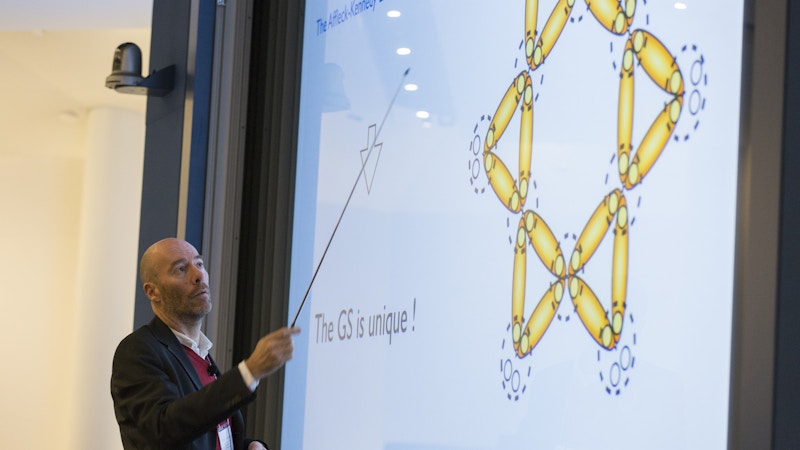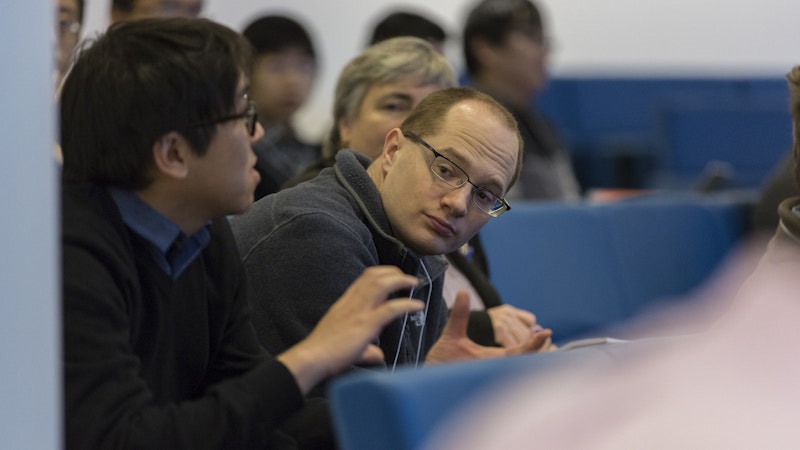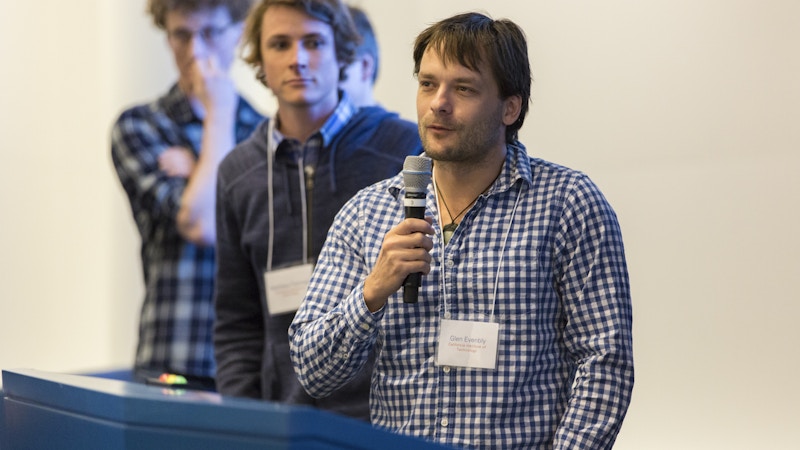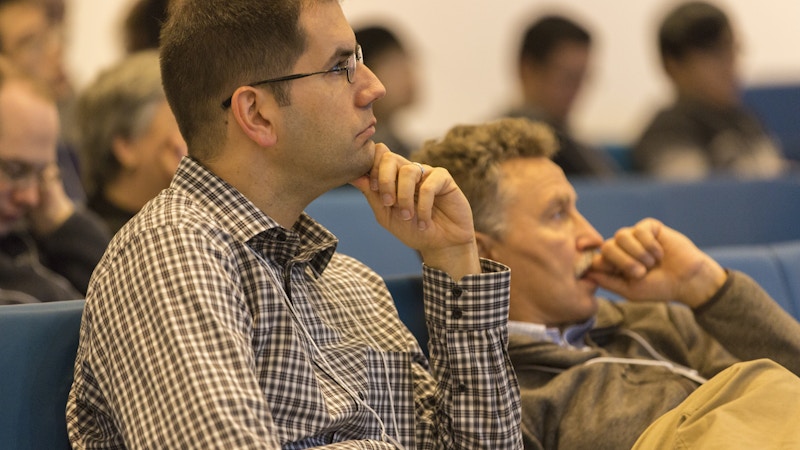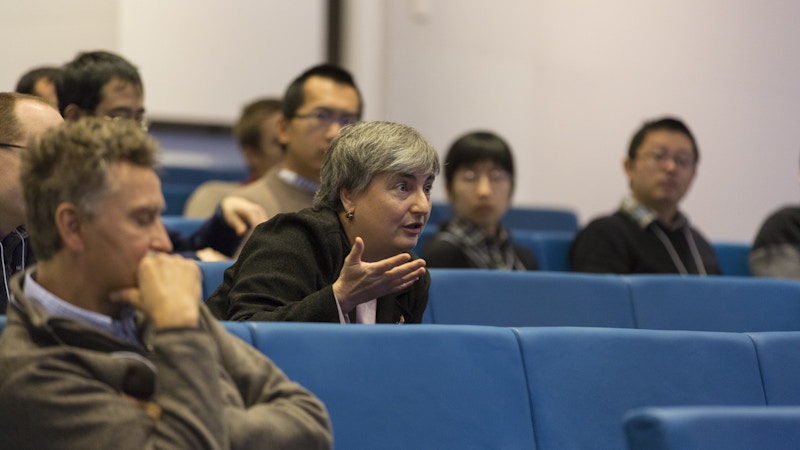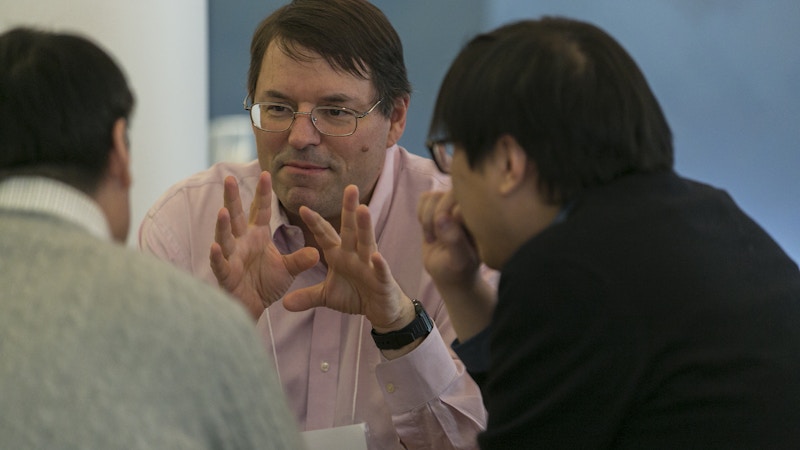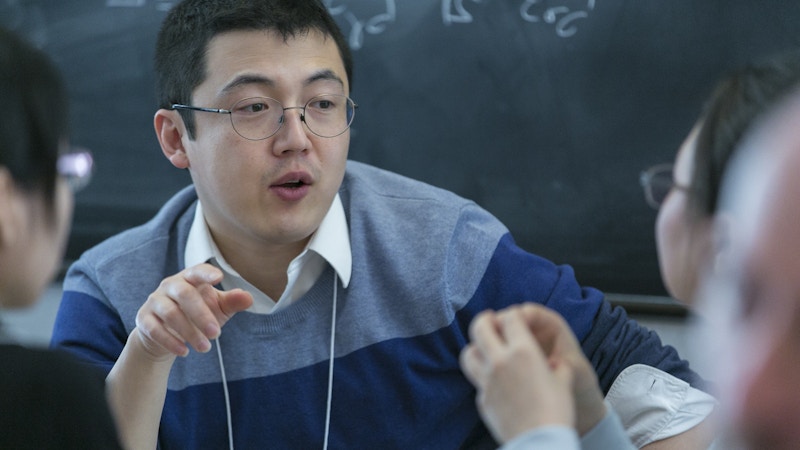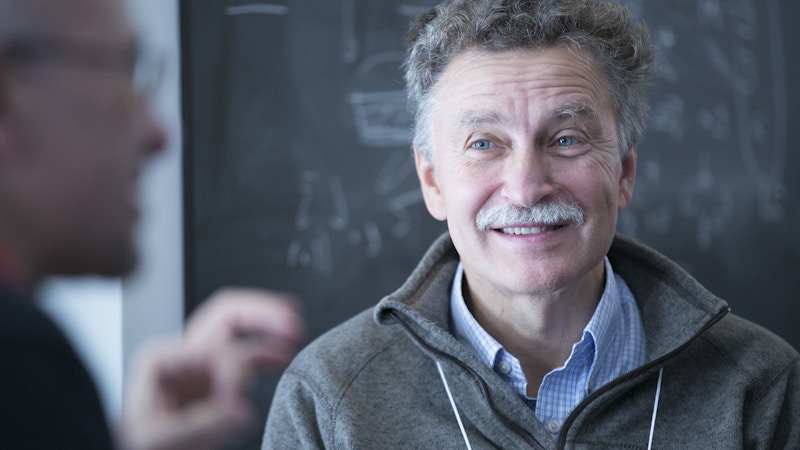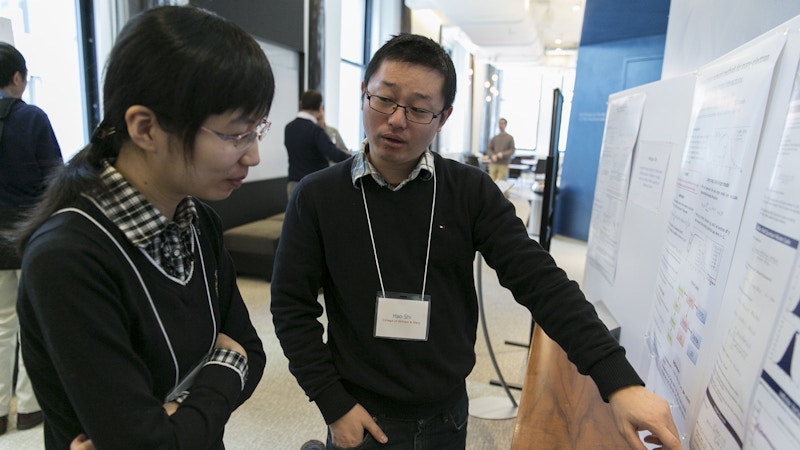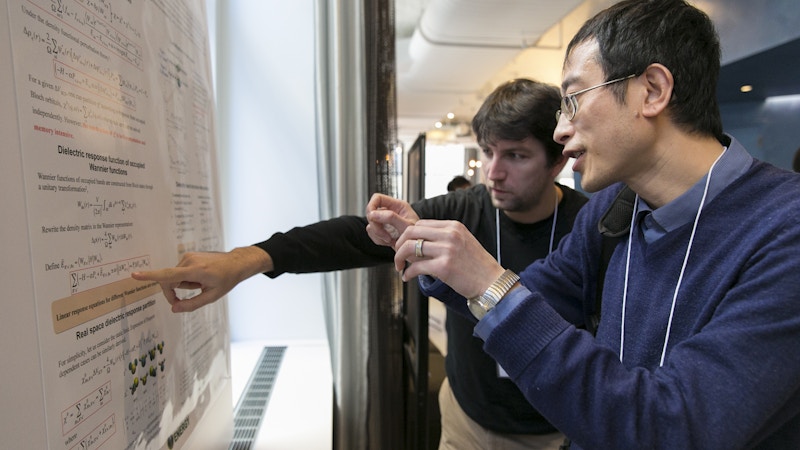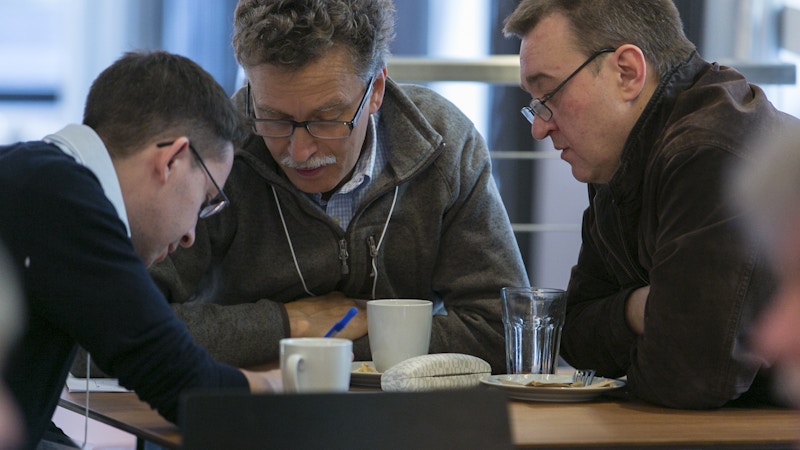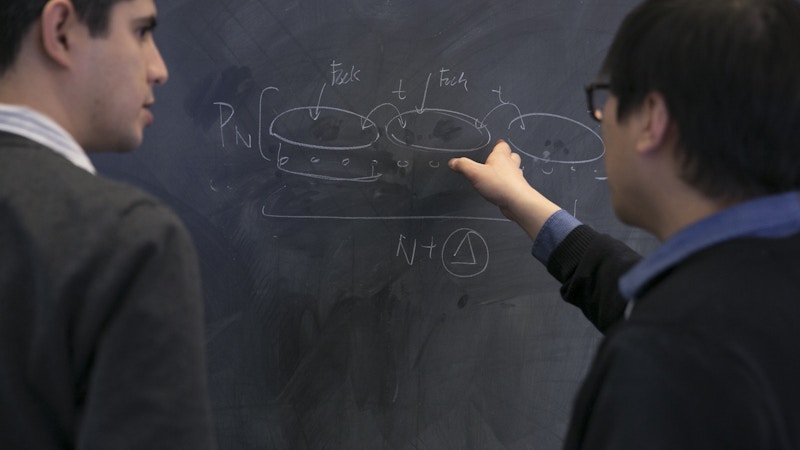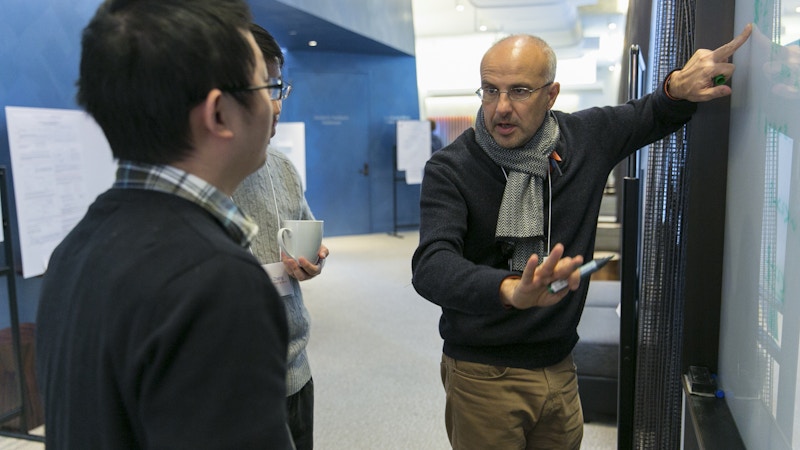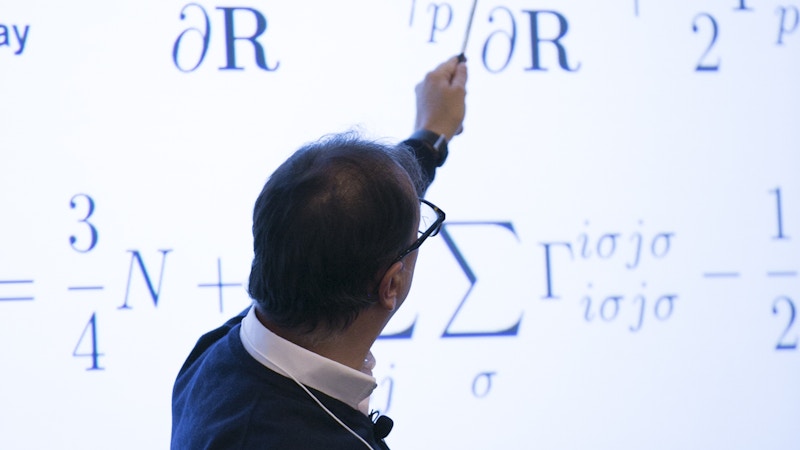Foundation Hosts Second Annual Conference on Theory and Biology
On April 17, the Simons Foundation hosted 83 scientists and students for its second annual day-long Conference on Theory and Biology. The conference brought together theoretical and experimental researchers interested in quantitative and conceptual approaches to biological problems, providing these two groups with the opportunity to learn from each other.
“One of the great things about this conference is the range of things that are represented,” says William Bialek, the John Archibald Wheeler/Battelle Professor of Physics at Princeton University. “You have people who are working on very different kinds of biological systems but somehow searching for the same kind of understanding. It’s nice to see that search in these very different contexts.”
The conference is held each year at the foundation by the Mathematical Modeling of Living Systems program, a joint initiative of the Mathematics and Physical Sciences and the Life Sciences divisions. It strives to highlight the role of theoretical work in the life sciences — from the modeling of current experimental data to the formulation of concepts that help scientists organize results and plan new experiments.
“I’ve enjoyed the wide selection of topics,” says Max Wilson, who is pursuing his Ph.D. in molecular biology at Princeton. “It’s a treat to experience so many different points of view on so many different types of biology, and to be exposed to all the different mathematical models that people are applying.”
Featuring nine talks, with breaks for casual discussion, the program covered topics ranging from how the brain generates movement to how to make predictive, biological phenomenological models.
Theresa Marlin, an undergraduate mathematics major at DeSales University in Pennsylvania, benefitted from the accessibility of the talks. “It’s been a great experience,” she says. “I’m still trying to figure out what to do after I graduate, so it’s been great to see all the talks that bring these topics to an accessible level that I can understand. I can see all the different possibilities.”
The conference brought together investigators and students from all stages of career study. During breaks, undergraduates like Marlin spoke with seasoned experts like Bialek, and both groups were excited by the relatively uncommon experience. Some students had even travelled in to see particular speakers whose work they were interested in.
“It’s phenomenal seeing so many senior and junior colleagues all packed in one room. It’s unique,” says Thomas Gregor, assistant professor of physics at Princeton. “If Simons can continue that, facilitating such a strong biophysics meeting here in the New York area, where all the big people, and new, young ones always come regularly, that would be awesome. That’s what’s needed.”
Full meeting agenda available here.
